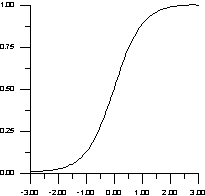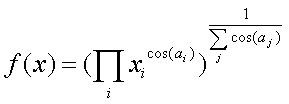- Leakage of Light in Diamonds and Its Estimation
- Stereoview: Stereovision and evaluation of leakage
- Taking into account the features of human perception
- Brilliance
- Light Return
- Contrast
Taking into account the features of human perception
The necessity of taking into account the psychophysiological factors of human perception of the appearance of a diamond has changed the modeling methods used in gemological studies. In particular, a number of special functions, such as subjective brightness, subjective grading, and weighed geometric average, have been introduced.
1. Subjective brightness function.
If an observer is provided with a number of grayscale color samples and asked to select such a gray tone that equally differs from white and from black, he faces a considerable difficulty, because estimating the relative value of two considerable color differences is based solely on a subjective impression. However, the required gray tone can be determined by averaging the subjective estimations of a few observers.
Then, the same method can be applied to the two color ranges obtained (the first is from black to middle-gray; the second is from middle-gray to white). As a result,
a uniform-contrast scale of luminosity (subjective brightness) can be built. This was one of the methods used to define a grayscale in Munsell's color space. One of the first formulas
to determine this scale was the square root of the brightness (intensity),  It is worth noting that a power law is suitable not only for defining subjective visual scales, but also for describing the human perception of sound intensity and some other characteristics.
In other words, to make the human perception twice stronger, the intensity of the external action should be increased 4 times. In 1964 CIE approved a cube root formula,
It is worth noting that a power law is suitable not only for defining subjective visual scales, but also for describing the human perception of sound intensity and some other characteristics.
In other words, to make the human perception twice stronger, the intensity of the external action should be increased 4 times. In 1964 CIE approved a cube root formula,  which well fits the Munsell's square-root luminosity scale for Y ranging from 1 to 100. These formulas do not take into account adaptation of the observer's eye to the background. At the same time, the background level strongly affects the subjective brightness of an object. You may feel it by comparing two gray squares of the same intensity, surrounded by a black and a white background. which well fits the Munsell's square-root luminosity scale for Y ranging from 1 to 100. These formulas do not take into account adaptation of the observer's eye to the background. At the same time, the background level strongly affects the subjective brightness of an object. You may feel it by comparing two gray squares of the same intensity, surrounded by a black and a white background.
On the basis of experimental results obtained by Kaneko, Takanashi, and Semmelroth, it has been shown that the following formulas are more adequate for calculating the subjective brightness of an object, depending on the background level:
 where V is the subjective brightness (or luminosity) of the object; Y is the intensity (luminance) of the object; YBG is the intensity (luminance) of the background that surround the object; m, n, and k are coefficients that determine the relative contributions of human stimuli. It is empirical fact that the most appropriate values of the latter coefficients are the following: m=0.4, n=0.2, and k=0.65. where V is the subjective brightness (or luminosity) of the object; Y is the intensity (luminance) of the object; YBG is the intensity (luminance) of the background that surround the object; m, n, and k are coefficients that determine the relative contributions of human stimuli. It is empirical fact that the most appropriate values of the latter coefficients are the following: m=0.4, n=0.2, and k=0.65.
We used a slightly modified version of the above formulas to estimate the brilliance of a diamond and leakage of light in it.
2. Subjective grading function.
People usually grade various phenomena using a discrete set of categories (such as "bad", "good", "perfect", etc.) rather than percent scale or another continuous measure. It can be said that people have natural bias towards discrete grading of phenomena, even if the physical characteristics of these phenomena change continuously. That's why we have introduced a so-called three-step Grading Sigmoid as a measure of human rating of phenomena studied. The conventional sigmoid function often used in mathematics (see the plot below) represents only two levels, while people use at least three levels to grade events. So, we had to slightly generalize the sigmoid function for our purposes.
 
3. Weighed geometric average function.
When modeling a grading procedure of a cut diamond, it is not enough to take into account only a single static position of the stone. This is because a real observer would view the diamond from different sides. Therefore, we performed all the necessary computations for 15 orientations of the stone (it was rotated by 30 degrees around its axis) and then used weighed geometric averaging. The latter procedure reflects human perception more adequately than arithmetical averaging does. The geometrical averaging takes into account two key features of human perception.
The first feature is highlighting some bad views of the stone under study. This means that if the observer notices a bad perspective while changing the stone orientation, the negative impression may last even after the perspective is changed to a more advantageous one. The human perception tends to grade this stone as bad. So, the geometric averaging makes it possible to adequately grade those stones looking bad in some orientations and prevents the negative rating from being compensated by advantageous perspectives. Such compensation may easily occur if one uses arithmetical averaging.
The second key feature of human perception is that when grading a stone the observer pay more attention to the "crown up" position. The larger the deviation of the stone orientation from the position when the crown looks exactly towards the observer, the less the "subjective weight" of this orientation in overall grading. Therefore, we made the geometric averaging weighed by taking into account the deviation angle of the diamond from the "crown towards the observer" orientation. The resultant averaging function looked as follows:

|




















